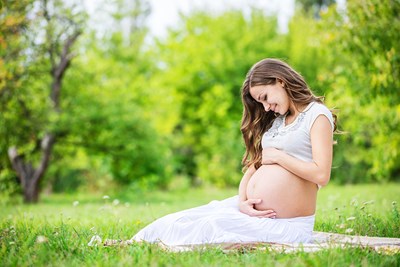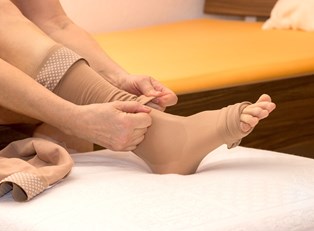You, like many women, may develop varicose veins for the first time during pregnancy. Or, if you've already had varicose veins, you may notice they get worse. They become more common during pregnancy because pressure from the uterus increases and changes hormones, and there's an increase of circulating blood. While varicose veins tend to get worse with each pregnancy, they often subside after childbirth, especially if you didn’t have them before pregnancy. Here’s a look at understanding varicose veins during pregnancy -- from symptoms to prevention.
Symptoms of Varicose Veins
Varicose veins are essentially swollen blood vessels, most commonly found in the legs although they may occur in the genital area as well -- not just in the vulva, but also the rectum (hemorrhoids). They usually take on a blue or purple coloration and look larger than normal veins, almost as if they’re closer to the top of the skin. You may not even notice they’re physically there, but they can be accompanied by aching around the area. The skin around the veins might itch, throb, or burn. These symptoms may be worse in the evening, especially if you spend a lot of time standing.
Preventing Varicose Veins
The main goal of preventing or minimizing the appearance of varicose veins is to improve blood circulation. Regular exercise isn’t only good for keeping a healthy weight and making labor and delivery easier, but also to help with varicose veins. Even a moderately paced, 30 minute walk most days of the week can make a difference. Maintaining the recommended weight for your body during pregnancy can also be helpful.
Another helpful preventative measure is elevate your legs whenever possible -- rest them on a foot stool while you’re sitting or take frequent breaks from long periods of standing. This minimizes the stress on your veins, because the moving blood is no longer working against gravity. Additionally, sleep on your left side to minimize the pressure on the blood vessels around the uterus. Crossing your legs while sitting can also increase the strain on your veins, so that should also be avoided as much as possible.
If you've had previous difficulties with varicose veins, support hose can be helpful. Support hose are essentially very thick, tight leggings designed to assist your veins by putting more pressure on your feet and your lower legs than your thighs. They’re available at most pharmacies and should be put on as soon as you get out of bed for maximum effectiveness. If you wear them all day, as recommended, get a new pair every three months or so to maintain the elasticity of the fabric.
Are Varicose Veins Dangerous?
It’s rare for varicose veins to become dangerous, so treatment can usually wait until after pregnancy -- although preventative measures should start immediately, especially if they run in the family. It’s possible for small clots to form or the veins to harden. If you notice discoloration of the surrounding skin, pain, or intense swelling, talk to your doctor immediately.




